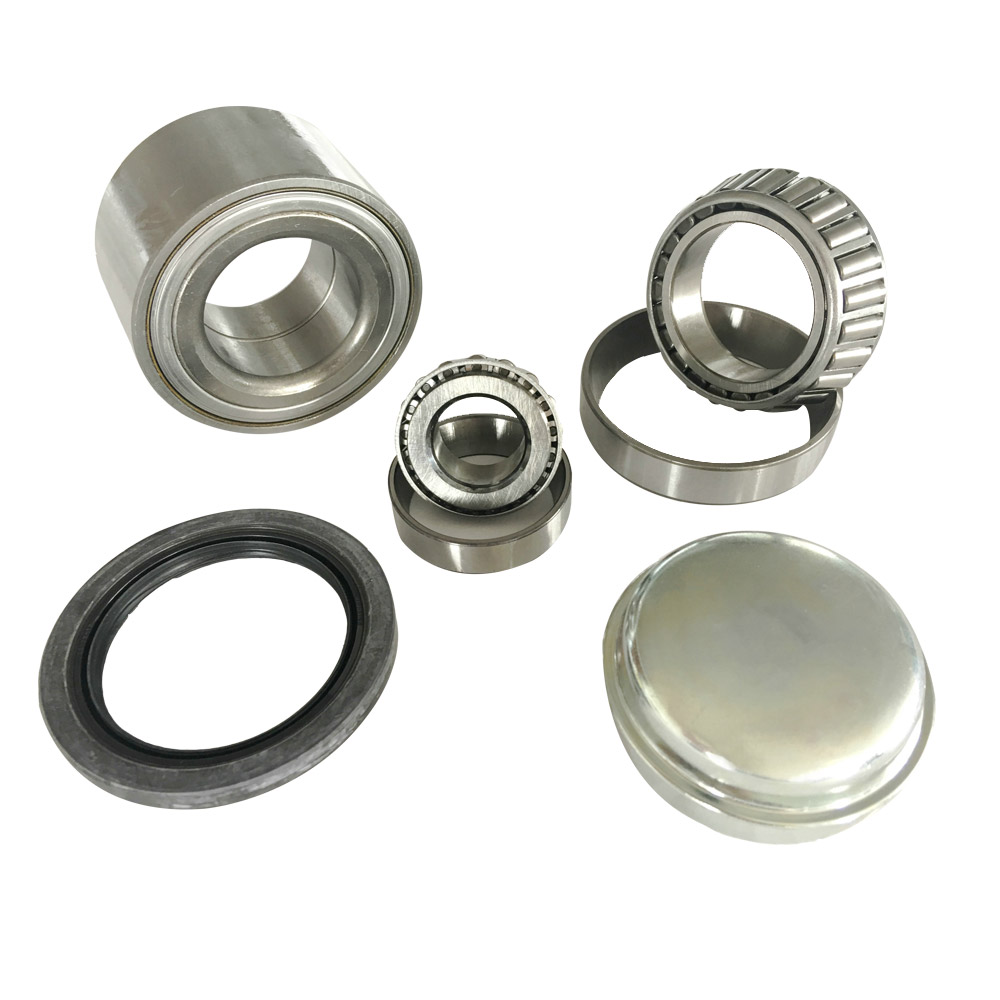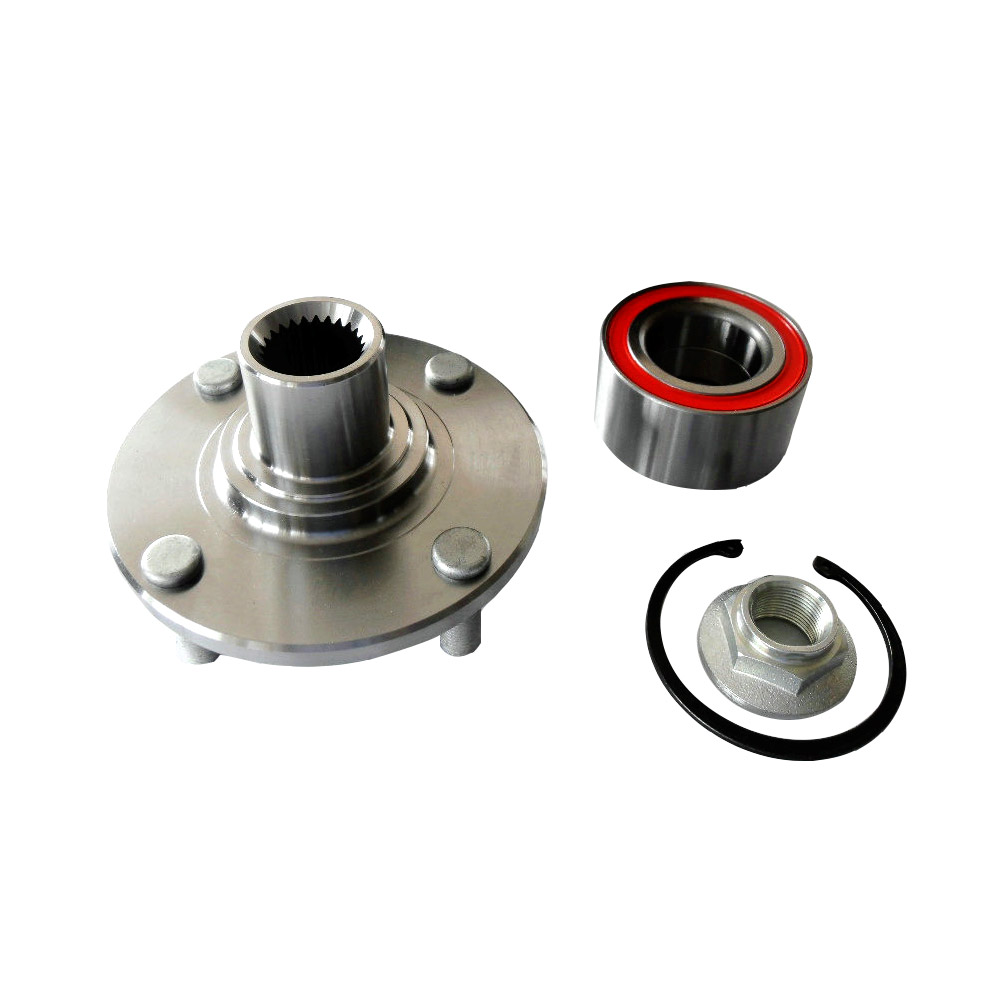A wheel hub bearing is a crucial component of your vehicle’s suspension and wheel system. It allows the wheel to rotate smoothly and is responsible for supporting the weight of the vehicle while enabling the wheels to turn. When this bearing fails or becomes damaged, it can lead to a range of performance issues that affect not just the functionality of your vehicle but also its safety. One of the most common questions among drivers is whether it’s safe to continue driving with a bad wheel hub bearing, and what the risks of doing so are.
In this article, we will explore the role of wheel hub bearings, how to identify signs of a bad bearing, and the risks involved in driving with a defective wheel hub bearing. We will also discuss the potential consequences of neglecting a bad wheel hub bearing and the importance of prompt repair.
1. What Is a Wheel Hub Bearing, and How Does It Work?
A wheel hub bearing is a set of steel balls or rollers housed inside a circular metal casing that sits between the wheel and the axle of a vehicle. It’s located inside the wheel hub, which is connected to the vehicle’s suspension. The purpose of the wheel hub bearing is to allow the wheel to rotate smoothly while also supporting the weight of the vehicle. The bearing reduces friction, which helps the wheels turn with ease, contributing to better vehicle performance, handling, and fuel efficiency.
A typical wheel hub bearing is designed to last for many miles, but like any mechanical component, it can wear out or become damaged over time. When a wheel hub bearing starts to fail, it can create a range of noticeable problems for the driver.
2. What Are the Signs of a Bad Wheel Hub Bearing?
The symptoms of a failing wheel hub bearing are typically easy to detect if you know what to look for. Some of the most common signs that your wheel hub bearing is damaged or worn include:
2.1 Unusual Noises
One of the first indicators of a bad wheel hub bearing is an unusual noise coming from the wheels. This noise typically starts as a low-pitched humming or grinding sound that increases with the speed of the vehicle. The noise may become louder or change pitch as the bearing gets worse.
- Grinding or whining: A grinding or whining sound that is heard while the vehicle is in motion may indicate that the bearing is worn out and not rotating smoothly.
- Clicking noise: A clicking or popping sound when turning is often associated with a worn-out bearing that is no longer able to support the wheel properly.
2.2 Vibration in the Steering Wheel or Floorboard
Another sign of a bad wheel hub bearing is noticeable vibration in the steering wheel or floorboard. This occurs when the bearing starts to deteriorate and affects the alignment of the wheel, causing it to wobble. As the bearing fails further, it can result in uneven wear on the tire, exacerbating the vibration.
- Steering wheel shake: If the steering wheel shakes or vibrates, especially at higher speeds, it could indicate that the bearing is no longer functioning properly.
- Vibrations in the floorboard: In some cases, you may feel vibrations in the floorboard, which is an indication that the bearing’s performance has significantly declined.

2.3 Uneven Tire Wear
If the wheel hub bearing is failing, it can cause the wheel to wobble or misalign, leading to uneven tire wear. This can result in certain areas of the tire wearing out faster than others, leading to the need for premature tire replacements.
- Cupping: If the bearing is worn, it can cause cup-shaped depressions in the tread of the tire. This is called “tire cupping,” and it can affect the overall driving experience, making the ride less smooth and quiet.
2.4 Steering Difficulty
A damaged or worn-out wheel hub bearing can make it harder to steer the vehicle. As the bearing deteriorates, it can cause the wheel to become stiff or less responsive, making it more difficult to turn or steer properly.
- Steering wheel resistance: If you experience any noticeable resistance when turning the steering wheel, it may be due to a bad wheel hub bearing causing extra friction or misalignment.
2.5 Play in the Wheel
You can check for play in the wheel by raising the car and trying to move the wheel by hand. If there’s noticeable movement (wobbling or clicking), this is a clear sign that the bearing is worn and should be replaced immediately.
3. Can You Drive with a Bad Wheel Hub Bearing?
Technically, it is possible to drive with a bad wheel hub bearing, but doing so is highly risky and can lead to serious consequences. As the bearing deteriorates further, the condition of your vehicle will continue to worsen, and the risk to your safety increases significantly.
Here’s why it’s not advisable to continue driving with a bad wheel hub bearing:
3.1 Risk of Complete Bearing Failure
A severely worn or damaged wheel hub bearing can eventually fail completely. If this happens while you are driving, it could cause the wheel to detach from the vehicle. This would be an extremely dangerous situation, especially at high speeds or on highways, and could result in a serious accident.
A complete failure of the wheel hub bearing can cause the wheel to wobble uncontrollably, damaging other components of the vehicle’s suspension and steering system, potentially leading to a loss of control.
3.2 Damage to Other Components
A bad wheel hub bearing can cause further damage to other critical components of the vehicle. As the bearing wears out, it can affect the brake system, suspension components, and steering mechanism. This can lead to expensive repairs if the issue is left unaddressed.
- Brake failure: The wheel hub bearing plays a role in the proper functioning of the braking system. If the bearing is damaged, it can affect the alignment of the brake rotor, causing uneven braking performance or brake failure.
- Suspension damage: A bad wheel hub bearing can also cause strain on suspension components like the struts or shocks, potentially leading to a misalignment or premature wear of these parts.
3.3 Reduced Vehicle Handling and Performance
A bad wheel hub bearing compromises the handling of the vehicle. The vibrations, noises, and misalignment caused by a worn-out bearing can affect the way your vehicle drives. Steering issues, vibrations, and uneven tire wear all contribute to a less comfortable driving experience and can make the car more difficult to control, especially at high speeds.
3.4 Increased Repair Costs
Driving with a bad wheel hub bearing puts more stress on the entire suspension and steering system. This can lead to additional damage and higher repair costs in the long run. By delaying the repair of a bad wheel hub bearing, you risk causing more extensive damage to other parts of the vehicle, which can result in a significantly more expensive repair bill.
4. What Are the Risks of Continuing to Drive with a Bad Wheel Hub Bearing?
The risks of driving with a bad wheel hub bearing include:
- Complete bearing failure: As mentioned earlier, a completely failed bearing can cause a wheel to detach, resulting in loss of control and a serious accident.
- Increased safety risk: The compromised handling, uneven braking, and vibrations can put both you and other road users at risk.
- Potential for further damage: Other components of the suspension, brake system, and steering can also be damaged by a worn-out wheel hub bearing, increasing repair costs and the potential for more serious issues.
- Legal implications: In some jurisdictions, driving with a known mechanical issue like a bad wheel hub bearing could result in legal consequences, especially if it leads to an accident or a safety violation.
5. What Should You Do If You Suspect a Bad Wheel Hub Bearing?
If you notice any of the symptoms of a bad wheel hub bearing, such as unusual noises, vibrations, or steering issues, it’s essential to have it inspected and replaced as soon as possible. Ignoring the problem can result in severe consequences, as described above.
- Visit a mechanic: If you suspect that a wheel hub bearing is failing, take your vehicle to a trusted mechanic for a proper diagnosis. They can inspect the bearings, the wheels, and other related components to determine if repair or replacement is necessary.
- Get repairs done promptly: Replacing a wheel hub bearing is a relatively simple repair, but delaying it can lead to much more serious (and costly) issues down the road.
6. Conclusion
Driving with a bad wheel hub bearing is dangerous and not recommended. While it may be possible to continue driving for a short period, the risks involved—such as bearing failure, vehicle handling issues, and further damage to suspension and brake components—far outweigh the convenience of delaying repairs. Prompt attention to a bad wheel hub bearing is critical to maintaining your vehicle’s performance and ensuring your safety on the road.
If you notice any signs of a bad wheel hub bearing, don’t wait—have it inspected and replaced as soon as possible to avoid further complications and ensure safe driving.






